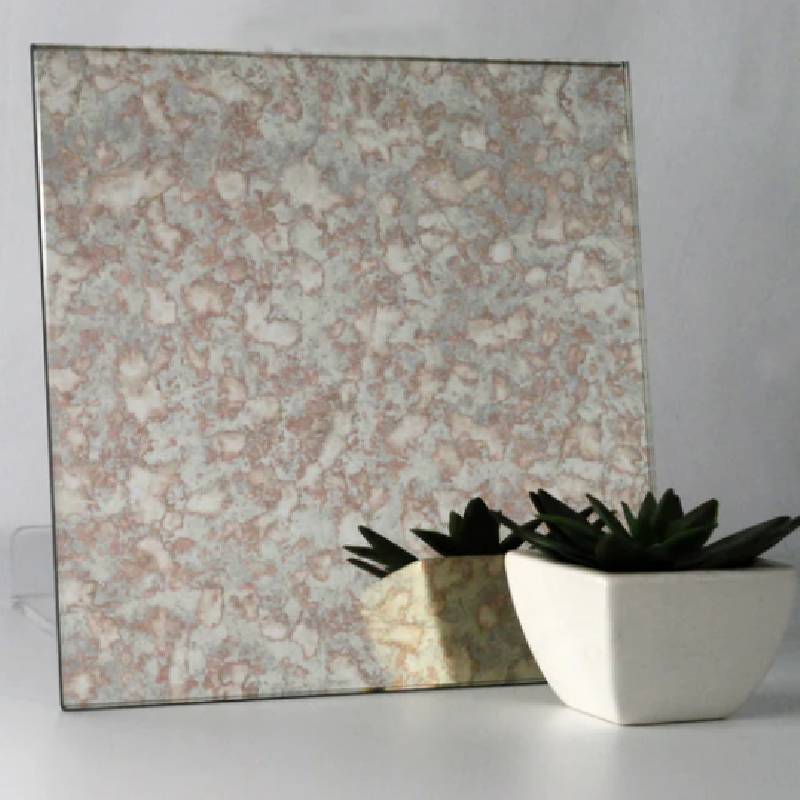The Aluminum Mirror Coating Process An Overview
Mirrors have been an integral part of human civilization, serving both practical and aesthetic purposes. In modern applications, aluminum mirror coatings are widely utilized due to their excellent reflective properties, lightweight nature, and affordability. This article delves into the aluminum mirror coating process, exploring its steps, advantages, and applications.
Understanding the Aluminum Mirror Coating
Aluminum mirror coatings refer to a layer of aluminum applied to a substrate. While other materials can be used for reflective surfaces, aluminum stands out for its high reflectivity across a range of wavelengths, particularly in the visible spectrum. The aluminum coating effectively creates a mirror-like surface that is capable of reflecting over 90% of visible light, making it suitable for various applications, from household mirrors to sophisticated optical devices.
The Coating Process
The process of applying an aluminum mirror coating can be broken down into a series of steps
1. Surface Preparation The substrate, usually made of glass or plastic, must first undergo thorough cleaning to remove any contaminants like dust, grease, or oils. Techniques such as ultrasonication and chemical cleaning are commonly employed to ensure a pristine surface.
2. Evaporation The cleaned substrate is placed inside a vacuum chamber. Aluminum is loaded into a crucible or may be provided in a wire form. The chamber is evacuated to create a high vacuum environment, significantly reducing the presence of atmospheric gases that could interfere with the coating process.
3. Thermal Deposition Once achieving the desired vacuum, aluminum is heated until it vaporizes. The vaporized aluminum atoms then condense onto the substrate, forming a thin film. The thickness of the coating is carefully controlled to achieve the desired reflectivity.
4. Cooling and Post-treatment After the deposition is complete, the substrate is left to cool down gradually, allowing the aluminum to adhere firmly. In some cases, a protective layer, such as a clear coat of epoxy or another resin, is applied to enhance durability and protect against oxidation and mechanical damage.
aluminum mirror coating process
5. Quality Control Post-coating, the mirrors undergo rigorous testing to ensure they meet the required specifications. This can involve measuring the reflectivity, inspecting the surface for defects, and checking the uniformity of the coating.
Advantages of Aluminum Coatings
Aluminum mirror coatings offer several distinct advantages over alternative methods
- High Reflectivity Aluminum provides excellent reflectivity, especially in the visible and infrared regions, which is crucial for many optical applications.
- Cost-effectiveness Compared to other materials such as silver or gold, aluminum is more affordable, making it a popular choice for mass production.
- Durability When properly coated with a protective layer, aluminum mirrors exhibit good resistance to environmental factors, including humidity and oxidation.
- Lightweight Aluminum is significantly lighter than glass or metal alternatives, facilitating easier handling and installation.
Applications
Aluminum mirrors find utility across numerous fields
- Automotive Used in headlights and rearview mirrors, aluminum coatings enhance visibility and safety.
- Optics In telescopes, laser systems, and scientific instruments, aluminum mirrors play a critical role in guiding and reflecting light precisely.
- Consumer Products From bathroom mirrors to decorative items, aluminum coatings provide high-quality reflective surfaces for everyday use.
- Industrial In various manufacturing processes, aluminum mirrors are used in machinery that requires precision optics.
Conclusion
The aluminum mirror coating process combines innovation and practicality, resulting in effective and efficient reflective surfaces for diverse applications. With advancements in technology, the future of aluminum coatings looks promising, potentially allowing for even greater performance, durability, and environmental benefits. As industries continue to seek reliable, cost-effective solutions, aluminum mirrors will remain a staple in both everyday items and high-performance optical systems.
 Afrikaans
Afrikaans  Albanian
Albanian  Amharic
Amharic  Arabic
Arabic  Armenian
Armenian  Azerbaijani
Azerbaijani  Basque
Basque  Belarusian
Belarusian  Bengali
Bengali  Bosnian
Bosnian  Bulgarian
Bulgarian  Catalan
Catalan  Cebuano
Cebuano  Corsican
Corsican  Croatian
Croatian  Czech
Czech  Danish
Danish  Dutch
Dutch  English
English  Esperanto
Esperanto  Estonian
Estonian  Finnish
Finnish  French
French  Frisian
Frisian  Galician
Galician  Georgian
Georgian  German
German  Greek
Greek  Gujarati
Gujarati  Haitian Creole
Haitian Creole  hausa
hausa  hawaiian
hawaiian  Hebrew
Hebrew  Hindi
Hindi  Miao
Miao  Hungarian
Hungarian  Icelandic
Icelandic  igbo
igbo  Indonesian
Indonesian  irish
irish  Italian
Italian  Japanese
Japanese  Javanese
Javanese  Kannada
Kannada  kazakh
kazakh  Khmer
Khmer  Rwandese
Rwandese  Korean
Korean  Kurdish
Kurdish  Kyrgyz
Kyrgyz  Lao
Lao  Latin
Latin  Latvian
Latvian  Lithuanian
Lithuanian  Luxembourgish
Luxembourgish  Macedonian
Macedonian  Malgashi
Malgashi  Malay
Malay  Malayalam
Malayalam  Maltese
Maltese  Maori
Maori  Marathi
Marathi  Mongolian
Mongolian  Myanmar
Myanmar  Nepali
Nepali  Norwegian
Norwegian  Norwegian
Norwegian  Occitan
Occitan  Pashto
Pashto  Persian
Persian  Polish
Polish  Portuguese
Portuguese  Punjabi
Punjabi  Romanian
Romanian  Russian
Russian  Samoan
Samoan  Scottish Gaelic
Scottish Gaelic  Serbian
Serbian  Sesotho
Sesotho  Shona
Shona  Sindhi
Sindhi  Sinhala
Sinhala  Slovak
Slovak  Slovenian
Slovenian  Somali
Somali  Spanish
Spanish  Sundanese
Sundanese  Swahili
Swahili  Swedish
Swedish  Tagalog
Tagalog  Tajik
Tajik  Tamil
Tamil  Tatar
Tatar  Telugu
Telugu  Thai
Thai  Turkish
Turkish  Turkmen
Turkmen  Ukrainian
Ukrainian  Urdu
Urdu  Uighur
Uighur  Uzbek
Uzbek  Vietnamese
Vietnamese  Welsh
Welsh  Bantu
Bantu  Yiddish
Yiddish  Yoruba
Yoruba  Zulu
Zulu 

